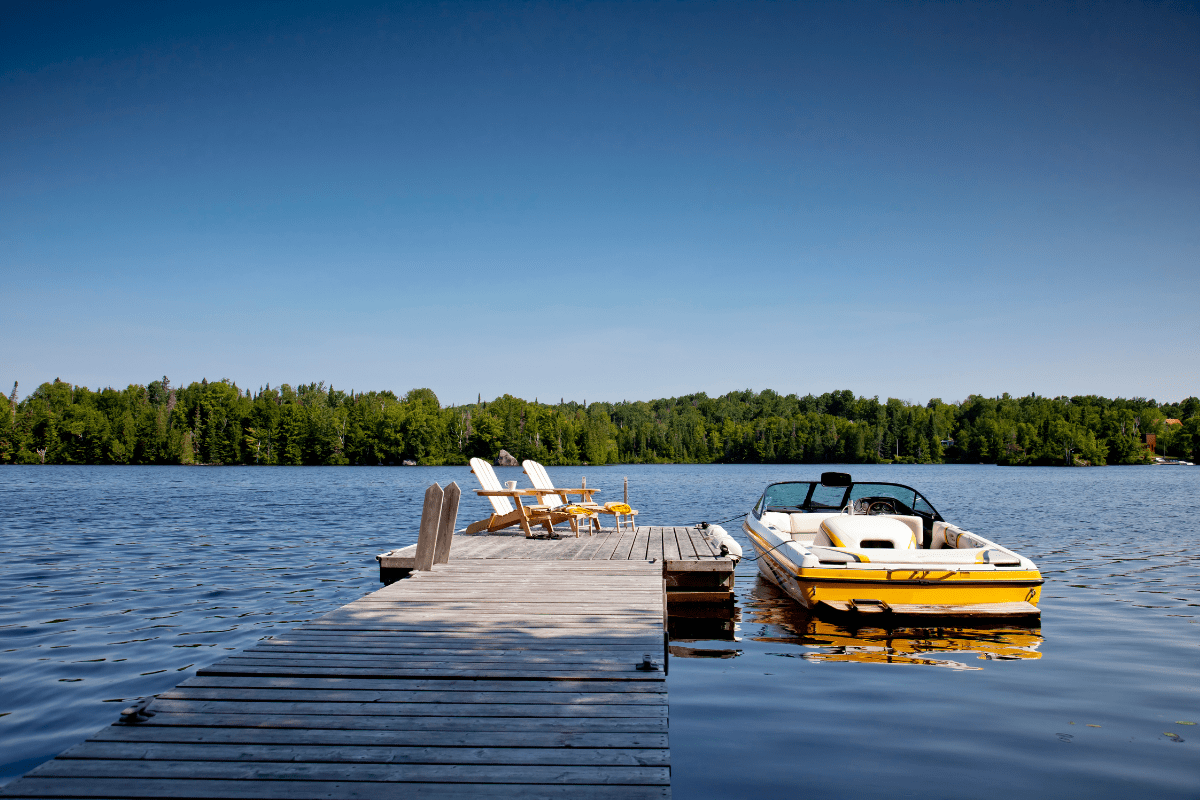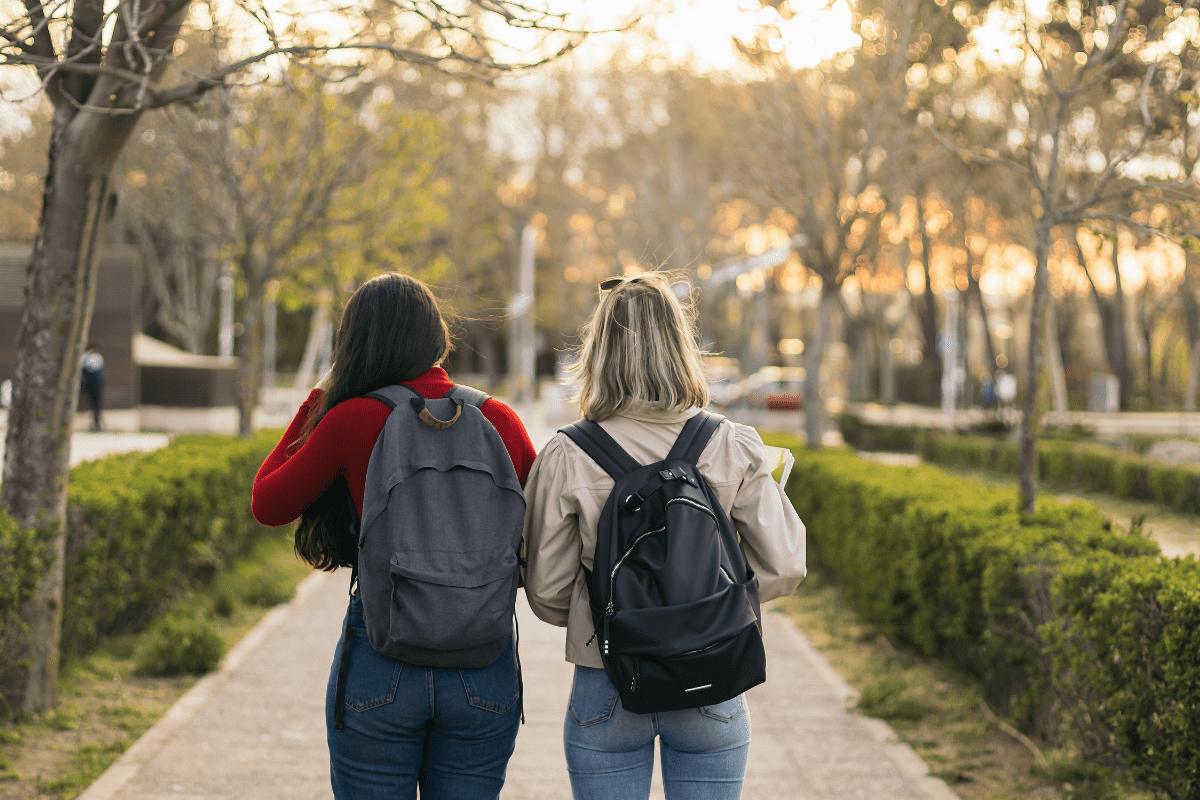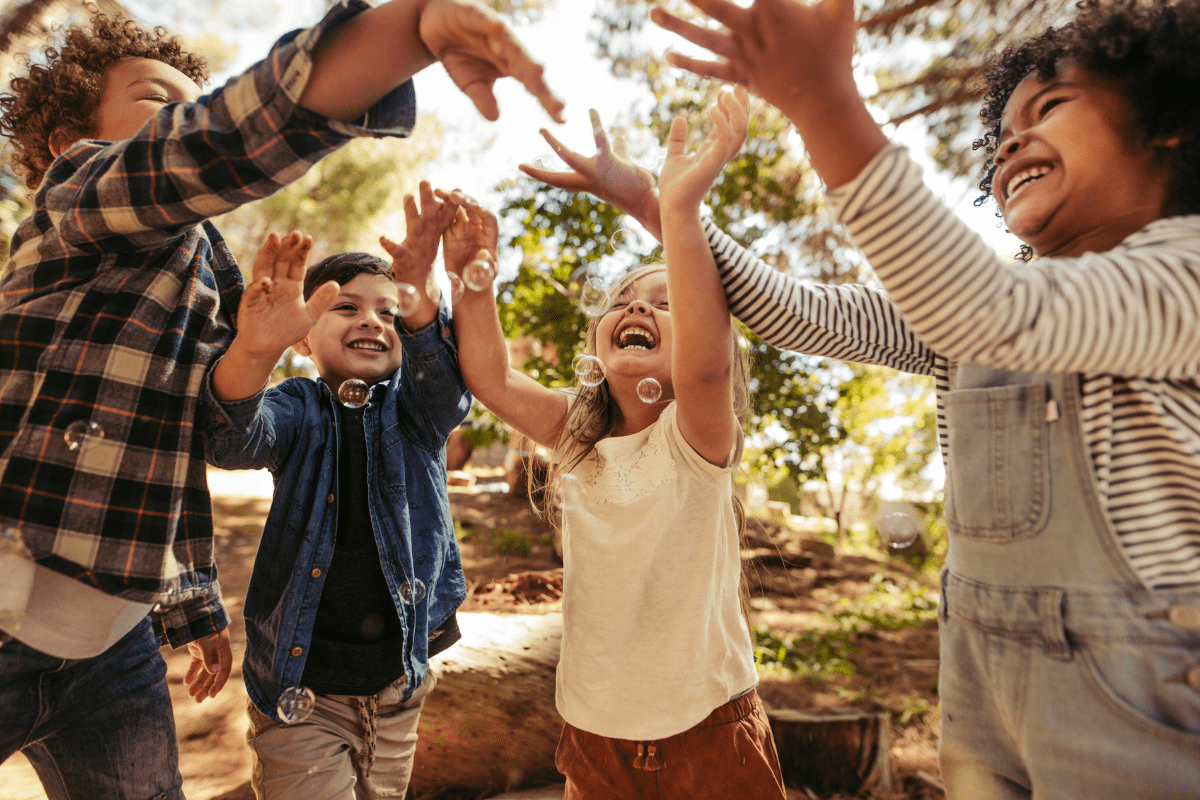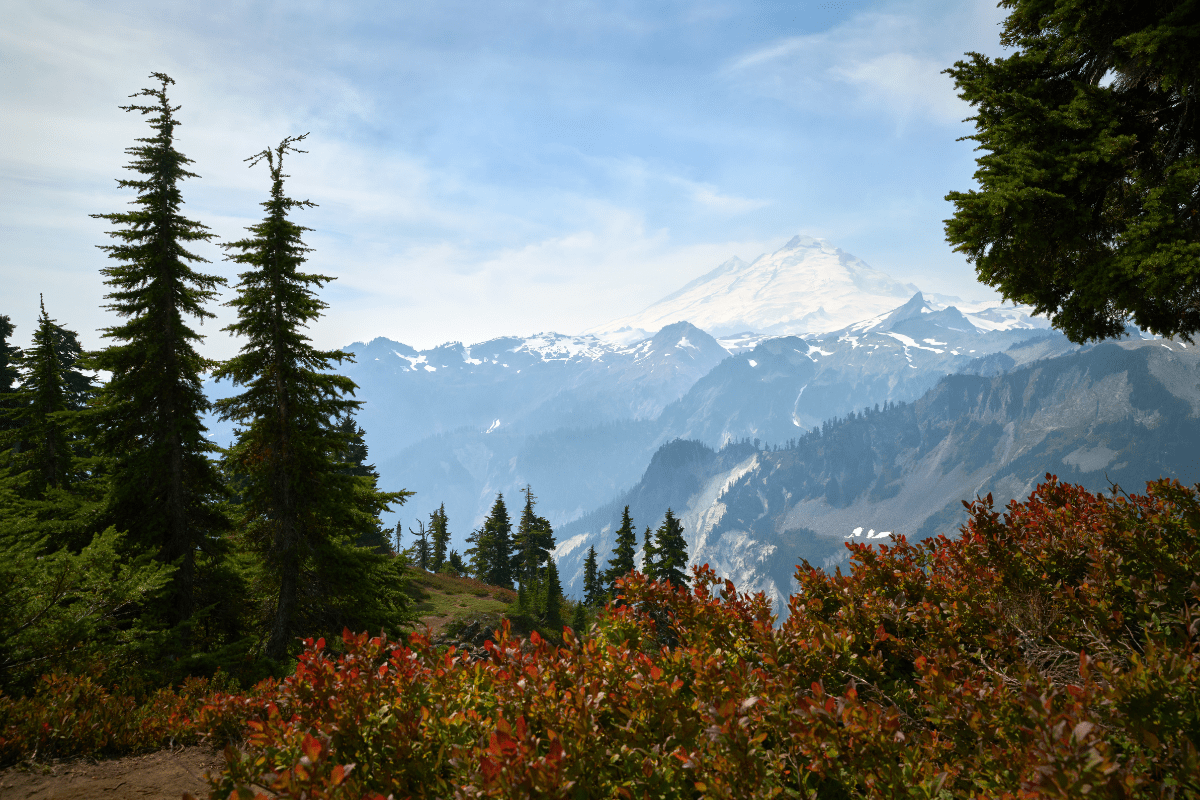Washington has over 8,000 lakes, which honestly feels like someone got carried away with the whole water feature thing. From turquoise alpine gems that'll ruin your Instagram feed for everyone else to warm Eastern Washington reservoirs where you can actually swim without hypothermia, there's a lake for every mood, skill level, and acceptable driving distance.
The permit puzzle (aka why your glove compartment is about to get very full)
Before you grab your swimsuit and that inflatable unicorn you bought during lockdown, let's talk permits. Washington's permit system is like a subscription service gone wild, but at least these actually get you somewhere beautiful.
The passes you'll probably need
The Discover Pass is your golden ticket to state lands, costing $30 annually or $10 for a day pass. This covers State Parks, Department of Fish and Wildlife lands, and Department of Natural Resources properties… basically everything that isn't federal. Pro tip: that $99 fine for not displaying one will definitely ruin the vibe of your lake day. The Northwest Forest Pass ($30 annually, $5 daily) gets you into National Forest trailheads, while Olympic and Mount Rainier National Parks each want their own $30 per vehicle for a week's access.
If you're planning to fish, residents need a $29.50 freshwater license if you're 15 or older. Don't forget those catch record cards for salmon, steelhead, and sturgeon, because wildlife officers actually check these things. Trust me on this one.
Safety stuff that sounds paranoid until it isn't
Here's the thing about Washington lakes: they're cold. Like, really cold. Even in August, most lakes stay below 70°F, which triggers involuntary gasping and makes you lose strength in 3-5 minutes. The state parks website has horror stories if you need convincing. Kids 12 and under must wear life jackets on boats under 19 feet, and considering 80% of boating fatalities involve people not wearing them, maybe we should all reconsider our choices.
Those pretty blue-green blooms that look like spilled paint? Yeah, those are toxic algae that can cause everything from skin irritation to neurological issues. Check nwtoxicalgae.org before you go, because "brain-eating algae" is not the lake memory you want. King County tests popular beaches weekly from mid-May through mid-September, posting results online for the germaphobes among us (no judgment).
When to go (and when everyone else is going too)
Mountain lakes above 3,500 feet typically don't melt out until late June or July, though climate change keeps pushing these dates earlier. Snow Lake's parking lot fills before 8 AM on summer weekends, which means either setting multiple alarms or accepting defeat.
Eastern Washington gets 320+ sunny days annually, making April through October prime time for their warm-water lakes. Winter ice fishing happens December through March when conditions cooperate, though "cooperative" is relative when you're sitting on frozen water. Many mountain access roads close from November through May, so your November Colchuck Lake dreams need to wait until summer.
Cascade Mountain lakes: Where your camera roll goes to die
The Cascades serve up the kind of scenery that makes people quit their jobs and buy vans. These glacial-fed beauties range from roadside pullouts to "why did I think I was in shape" adventures.
The easy wins
Diablo Lake along Highway 20 might be Washington's most photographed lake, and for good reason. Its famous turquoise color comes from glacial flour (basically rock dust) that peaks from July through September. You can admire it from highway overlooks like a normal person, or hike the 7.4-mile Diablo Lake Trail if you enjoy gaining 1,885 feet of elevation for your views. Either way, you'll need that Northwest Forest Pass.
Snow Lake, just an hour from Seattle via I-90, is technically easy at 7.2 miles round trip with 1,800 feet of elevation gain. But its proximity to the city means you'll be sharing the trail with approximately everyone you've ever met. The lake sits at 4,400 feet, surrounded by peaks that make you understand why people become those REI catalog people.
The ones that'll humble you
Colchuck Lake rewards your 8.5-mile round trip and 2,100-foot elevation gain with water so blue it looks fake. Beneath Dragontail Peak (which sounds like something from a fantasy novel but is very real), this alpine destination attracts photographers, backpackers, and people who severely overestimated their fitness level.
Lake Ingalls sits at 6,467 feet and requires 8.9 miles of hiking with 2,834 feet of gain. It's famous for golden larches in late September, when the trees turn into nature's version of a Vegas light show. Dogs aren't allowed on the Ingalls Way Trail, presumably because they'd show us all up with their superior cardio.
Ross Lake stretches over 20 miles with zero road access, because sometimes lakes like their privacy. Ross Lake Resort operates 15 floating cabins and water taxi service from June through October, accessing 19 boat-in campgrounds. Backcountry permits run $10 per person, plus reservation fees, because even wilderness has administrative costs.
Olympic Peninsula: Rainforest meets water
The Olympic Peninsula does lakes differently, surrounding them with temperate rainforest that gets 12 feet of rain annually. Yes, feet. These lakes come with a side of moss-draped trees and Roosevelt elk sightings.
Drive-up classics
Lake Crescent plunges 624 feet deep along Highway 101, with water so clear you can see 60 feet down. It harbors two endemic trout species found nowhere else on Earth, which is either really cool or slightly concerning depending on your perspective. Lake Crescent Lodge offers historic accommodations where you can pretend you're in a Wes Anderson film, while Fairholme Campground provides 88 sites for those of us with mortgage payments. The Spruce Railroad Trail offers an easy 4-mile family stroll, while Mount Storm King Trail includes rope sections for people who think regular hiking needs more excitement.
Lake Quinault receives those 12 feet of rain I mentioned, creating the lush rainforest that makes the Pacific Northwest famous. The 1926 Lake Quinault Lodge hosted President Roosevelt in 1937, probably complaining about the rain. Fifteen trails include paths to six record-breaking giant trees, because apparently everything grows XXL here. You'll need Quinault Tribe permits for fishing, with guided options available if you prefer someone else to blame for not catching anything.
The commitment required section
Seven Lakes Basin in Olympic National Park demands dedication. The 19-mile High Divide Loop accesses eight alpine lakes between 4,500 and 4,755 feet, with Heart Lake and Lunch Lake offering established camping spots. Backcountry permits must be reserved through recreation.gov starting April 15 at 7 AM PST (set those alarms), costing $8 per person per night.
Bear canisters are mandatory, not optional, especially since hikers have reported seeing 11 black bears on single trips. That's not a typo… eleven bears. They're probably just trying to enjoy the lakes too, but still.
Lake Cushman near Hoodsport offers something completely different: warm water that reaches 72°F in summer. With 4,014 acres for water skiing and jet skiing, plus Skokomish Park's 82 campsites, it's the Olympic Peninsula's answer to "but what if we want to actually swim?" Winter drops water levels by 30 feet, exposing stumps that make boating… interesting.
Eastern Washington: Desert lakes that don't mess around
Eastern Washington traded trees for sunshine and created massive warm-water playgrounds that actually feel swimmable. These reservoirs support everything from tournament bass fishing to that water skiing hobby you keep threatening to start.
The giants
Banks Lake stretches 27 miles between Coulee City and Electric City, featuring an 800-foot rock called Steamboat Rock that rises from 27,000 surface acres like nature's skyscraper. The water gets pumped 280 feet uphill from the Columbia River through Grand Coulee Dam, because humans are extra like that. Steamboat Rock State Park provides 320 feet of dock, over 50 campsites, and seven boat launches. The fishing is legitimately good for smallmouth bass, walleye, and perch, occasionally freezing solid enough for ice fishing if you're into that sort of thing.
Lake Roosevelt extends 150 miles from Grand Coulee Dam to Canada, creating 77,684 acres with 660 miles of shoreline. That's more shoreline than California has ocean coastline, which feels wrong but isn't. The National Park Service manages 35 boat launches and 32 campgrounds, some only accessible by boat for that castaway experience. Launch permits cost $10 weekly or $60 annually. Mercury advisories suggest pregnant women and children limit walleye consumption, because apparently even fish need warning labels now. Call 800-824-4916 for water levels before you go, since they fluctuate more than cryptocurrency.
Interstate 90 convenient stops
Moses Lake near I-90 offers 6,800 acres with 120 miles of shoreline that actually warms enough for comfortable swimming. Trophy walleye exceeding 10 pounds and smallmouth bass over 5 pounds make anglers do that thing where they hold fish at arm's length for photos. Blue Heron Park provides 78 acres of facilities, Cascade Campground offers 85 sites, and the adjacent Surf 'n Slide Water Park adds family entertainment for when the kids get bored of nature.
Potholes Reservoir covers 28,000 acres at full pool, created among sand dunes south of Moses Lake in a landscape that looks accidentally apocalyptic. MarDon Resort provides the full setup: cabins, RV sites, marina access, and restaurant dining for when you realize you forgot the camp stove. The 640-acre Potholes State Park features 6,000 feet of shoreline. Regular bass and walleye tournaments happen here, plus sandhill cranes provide wildlife viewing for people who think fishing is boring.
Puget Sound area: Urban lakes for the commitment-phobic
Sometimes you want nature without the actual nature part. Puget Sound's urban lakes deliver accessibility, amenities, and the ability to grab coffee afterward.
Seattle's greatest hits
Green Lake in north Seattle attracts millions annually to its 2.8-mile paved loop circling 259 acres. Formed by glacial action 50,000 years ago (because Seattle's old like that), the lake reaches just 30 feet deep. Two lifeguarded beaches operate summers only, while the Small Craft Center offers rowing programs for people who think running around the lake isn't enough suffering. Street parking on weekends requires arriving before 10 AM or accepting your fate and taking the bus.
Lake Washington stretches 22 miles as Washington's second-largest natural lake, forming Seattle's eastern border with 75 miles of shoreline. Madison Park Beach, Mount Baker Beach, and Mercer Island's Luther Burbank Park provide swimming access with weekly bacterial monitoring from mid-May through mid-September. The 18-mile Burke-Gilman Trail follows portions of shoreline for cyclists who enjoy dodging pedestrians. Water quality stays excellent in open waters, though maybe avoid swimming right after rainstorms.
Lake Sammamish State Park encompasses two beaches, Sunset and Tibbetts, with playgrounds so elaborate they make your childhood look deprived. Activities available:
- Kayak and SUP rentals
- Pedal boat adventures
- Adaptive bike rentals through Outdoors for All
- Hans Jensen Group Camp bookings
- Swimming with 500 other families
- Searching desperately for parking
South Sound options
American Lake near Joint Base Lewis-McChord spans 1,091 acres reaching 121 feet deep, offering Mount Rainier views that make every photo look professional. American Lake Park and Harry Todd Park provide public beaches and boat launches at $15 daily (credit/debit only because it's 2025). The lake supports rainbow trout, kokanee, yellow perch, and both bass species, with yellow perch fishing particularly productive for people who actually know what they're doing.
Lake Tapps adds multiple public parks with swimming beaches, though calling it a "lake" when it's actually a reservoir feels like false advertising. Lake Tapps North Park provides facilities for standard lake activities, assuming your standards include crowds and boat noise.
The bureaucracy of boating
If you were born after January 1, 1955, you need an education card to operate vessels over 15 horsepower, because apparently that's when people forgot how to boat safely. All motorized vessels require registration except those under 16 feet with 10 or fewer horsepower on non-federal waters. The rules feel arbitrary but probably prevent some percentage of chaos.
Making it actually happen
The best lake experience comes from matching your destination to your reality. If you've got kids, skip the 19-mile Seven Lakes Basin loop and hit Lake Sammamish where playgrounds provide backup entertainment. If crowds make you twitchy, avoid Snow Lake on weekends and find something requiring more effort than most people will expend.
Timing matters more than you'd think. Mountain lakes don't just mean elevation gain… they mean waiting until July for ice-out, arriving at dawn for parking, and accepting that "summer" water temperatures still require mental preparation. Eastern Washington's warm-water lakes peak from April through October, offering actual swimming temperatures and reliable sunshine.
Download the permit apps, check the algae warnings, and remember that every horror story about cold water shock is written by someone who survived to warn others. Pack the life jackets even if they're unflattering, bring the Northwest Forest Pass you'll definitely forget at home at least once, and accept that Washington lakes require commitment but deliver experiences worth the administrative hassle.
Whether you're floating on Banks Lake wondering how water got to the desert, gasping at Colchuck Lake's impossible blue, or doing gentle laps at Green Lake while Seattleites judge your form, Washington's 8,000+ lakes ensure you'll never run out of water bodies to explore. Just remember to buy the right permit, check the conditions, and maybe practice your cold water gasping face in advance. The lakes aren't going anywhere, though the parking spots definitely are.





